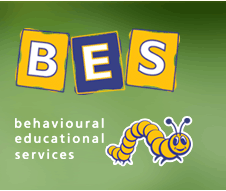What is CABAS?The Comprehensive Application of Behaviour Analysis to Schooling (CABAS�) is a research-driven system-wide approach providing individualised programmes for children and young people with and without disabilities. It was developed by R. Douglas Greer, PhD and colleagues of Teachers College, Columbia University. Several schools in the U. S. currently use this approach to teach children with autism, pervasive developmental disorder, communication disabilities, and other delays in learning, using an ABA (Applied Behaviour Analysis) methodology in a school setting. A profile of Dr. Greer describing some of his current research projects in the U.S is detailed in J Levine (2007). CABAS� uses a scripted curricula measured through "learn units", tactics from the scientific literature and PSI (Personalised System of Instruction) for staff training. Research has shown strong relationships between the number of learning objectives achieved by pupils and (a) the number of learn units received by pupils, (b) the number of weekly teacher observations, and (c) the number of accurate reactions to pupil responses.
Curriculum Students in a CABAS ABA Programme are initially assessed to see what behaviours are present and which require instruction. An inventory of repertoires to determine the student's current skill level is used, and are categorised as follows: Communication: This is based on the verbal behaviour model and focuses on listener repertoires, such as compliance to verbal commands, and speaker repertoires, such as responding verbally to either verbal or non-verbal stimuli. Academic Literacy: This category includes responding either by classifying relationships between phenomena or by following steps involved in simple or complex operations. Examples include reader and writer behaviours, matching stimuli and discriminating between stimuli. Social skills: This refers to the behaviours and the controlling stimuli between the student and the teacher or the student and his or her peers. It includes attentional control, sharing, appropriate touching and appropriate demeanour. Community of Reinforcers: This involves expanding each pupil�s community of reinforcers, e.g. playing with toys independently, looking at books independently. Self-sufficiency: Behaviours listed in this repertoire are those that are likely to determine whether or not the pupil can succeed in a mainstream classroom. Physical Development: This includes the fine motor skills that are important for school, such as holding and using scissors, and also gross motor skills, such as throwing a ball and jumping. Learn Units The basic pupil to teacher interaction is referred to as a Learn Unit in CABAS® instruction (McDonough & Greer, 1999; Greer, 2002). A learn unit includes teacher presentations, pupil responses, and how the teacher should respond depending on whether the pupil’s response is accurate or inaccurate. Decision Protocol We use the decision protocol, as described by Keohane and Greer (2005) and Greer (2002), to analyse the graphs and make empirically driven instructional decisions, and to gauge the effectiveness of the teaching. TPRAs An observational procedure has been designed by CABAS® to collect data on pupil and teacher responding, and to convert these responses to rates of teacher and pupil behaviour. This procedure is termed Teacher Performance Rate and Accuracy (TPRA). Modules To be system-wide means that the approach is applied to the whole organisation. The pupil and teachers are trained using an ABA approach. Teachers are taught to be scientists, decision-makers and leaders. All are working through a set of individualised modules set up by Columbia University. BES teaching staff receive intensive training, and their skills are assessed on an ongoing basis to ensure that standards are maintained. References • Greer, R.D., & McDonough, S. H. (1999). Is the learn unit the fundamental unit of pedagogy? The Behavior Analyst, 20, 5-16. • Greer, R.D. (2002). Designing Teaching Strategies: An Applied Behavior Analysis System Approach. San Diego, CA: Academic Press. • Greer, R.D., & Ross, D.E. (2008). Verbal Behavior Analysis - Inducing and Expanding New Verbal Capabilities in Children with Language Delays. Boston: Allyn & Bacon • Ingham, P., & Greer, R.D. (1992). Changes in student and teacher responses in observed and generalized settings as a function of supervisor observations. Journal of Applied Behavior Analysis, 25, 153-164. • Keohane, D, & Greer, R. D. (2005). Teachers use of verbally governed algorithm and student learning. Journal of Behavioral and Consultation Therapy, 1 (3), 249-259. • Levine, J (2007). The Unorthodox Behaviorist - a profile of Doug Greer. TC Today, The Magazine for Teachers College, Columbia University 24-31, 41-43.
|

